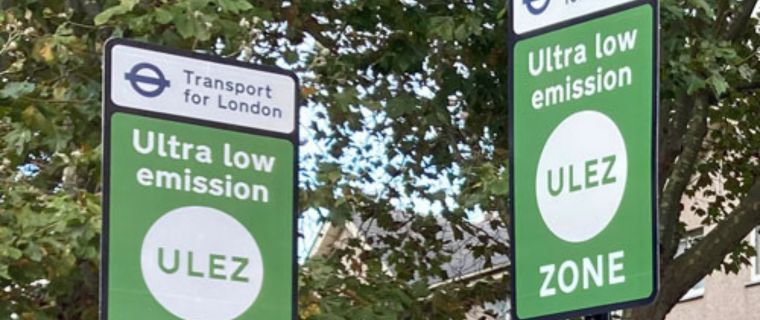What is ULEZ, a brief guide to London’s Ultra Low Emission Zone
Although the London ULEZ has been around for a few years now, it keeps ramping up to cover an ever greater area. As a result an increasing number of vehicle owning London residents are clamouring to know more about the details of the scheme, often before objecting to it.
So let’s take a look, with our brief explanation of what London’s ULEZ is all about.

ULEZ key dates
London’s Ultra Low Emission Zone was first introduced in April 2019 as a way to combat air pollution and initially covered Central London. It was later expanded in October 2021 to inside the North and South Circular boundaries, and is now planned to extend to the whole of Greater London (or inside the M25) in August 2023.
How much does it cost
The current ULEZ charge is £12.50 per day, for cars, motorbikes and vans up to 3.5 tonnes. If you drive in the zone and are liable for the ULEZ charge you are required to pay by midnight on the third day following your journey.
Which vehicles does it apply to
As a general guide, the following vehicles are liable to incur the ULEZ charge: Petrol engine cars registered before 2005, petrol vans before 2006. Diesel engine cars registered before 2015, diesel vans before 2016 (and all motorbikes before 2007).
You can check your vehicle with Transport for London, to see if you need to pay (it is claimed that over 80% of vehicles in London are already compliant and therefore not subject to the charge).
For residents affected by the expansion of the zone who own an older vehicle and may need financial help, there is also a scrappage scheme offering assistance, although only to those who are deemed eligible.
Who has to pay the charge
Initially, the ULEZ charge only applied to non-compliant vehicles travelling into London, but was later extended (yes you guessed it) to include all London residents living within the zone. The further away from central London you go, the higher the percentage of residential vehicle ownership, so resistance to the charge has naturally grown in proportion to the expansion of the zone.
How popular is ULEZ
Although around half of London residents are claimed to be in favour of ULEZ, It's fair to say that the planned extension to almost every area of Greater London in August 2023 is now facing significant opposition, with even official opinion polls suggesting nearly a third of Londoners are against it.
Small businesses and those on low incomes who depend on their older vehicles (especially if diesel) are clearly going to be severely affected, and owners of local businesses are predicting a big decline in customers as people either stay away from coming into the zone or just stop using their vehicles to travel.
In addition a coalition of five London councils have launched legal challenges against the expansion.
Will the expansion go ahead
Who knows, it's difficult to say but it's becoming an increasingly heated issue. On the one hand there are those who presumably either don't drive or maybe own a newer vehicle who may welcome any purported improvement in air quality.
Most people would rightfully like to breathe cleaner air no matter where they live, but the question is at what expense to those who will be negatively affected the most.
Many small tradesmen, local businesses and low income car and van owners who can't afford to buy a new ULEZ compliant vehicle are going to suffer, which will likely have a knock-on effect to all of us.
And this is at a time when we're experiencing the worst cost of living crises in decades.
Watch this space!
Date published:
Categories: London General